Who was the first person to climb Mt. Everest? Facts about conquering Earth's highest point
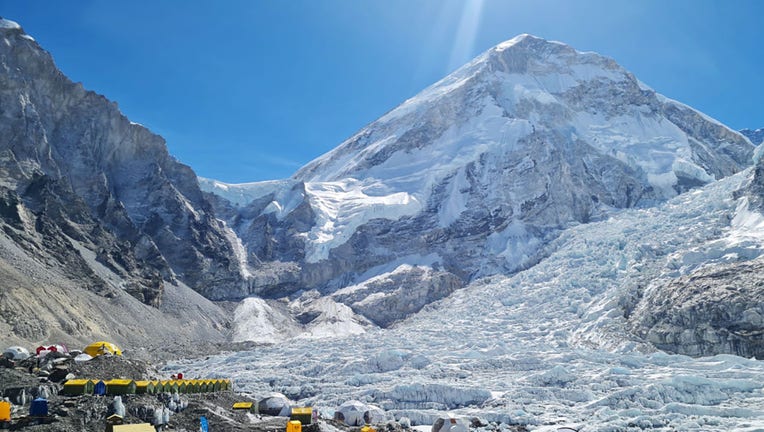
FILE - Tents of mountaineers are pictured at Everest base camp in the Mount Everest region of Solukhumbu district on April 18, 2024. (Photo by PURNIMA SHRESTHA/AFP via Getty Images)
Since the first conquest of Mount Everest in 1953, the peak has been climbed thousands of times, though hundreds have lost their lives attempting the trek.
The famous mountain sits on the border of Nepal and Tibet, an autonomous region of China.
Mount Everest is the highest of the Himalayan mountains. Reaching 8,848 meters (29,029 feet) at its summit, it’s considered the highest point on Earth.
Here are some things to know about conquering Everest:
Who was the first person to climb Mount Everest?
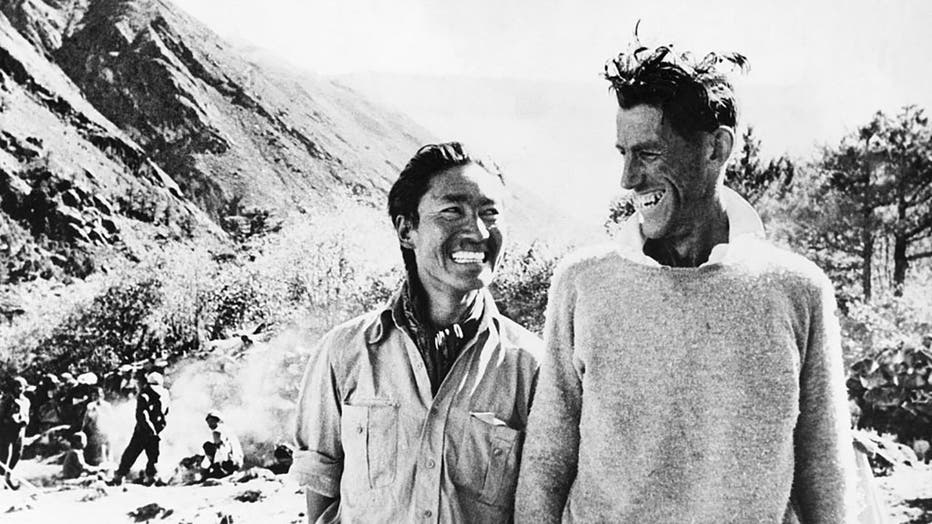
(Original Caption) First conquerors of Mount Everest: Smiling victors Sherpa Tenzing (Left) and Edmund Hillary at their camp after their return from Everest, circa June 1953.
New Zealander Edmund Hillary and his Sherpa guide Tenzing Norgay from Nepal were the first to reach the peak on May 29, 1953.
The two men were part of a British expedition that spent a night at 27,900 feet before attempting the summit. The pair reached the highest point on Earth at 11:30 a.m. local time, according to National Geographic.
News of their feat traveled around the world on June 2, also the day of Queen Elizabeth II’s coronation, according to History.com. The achievement catapulted both Hillary and Norgay into worldwide fame.
Who was the first woman to climb Mount Everest?
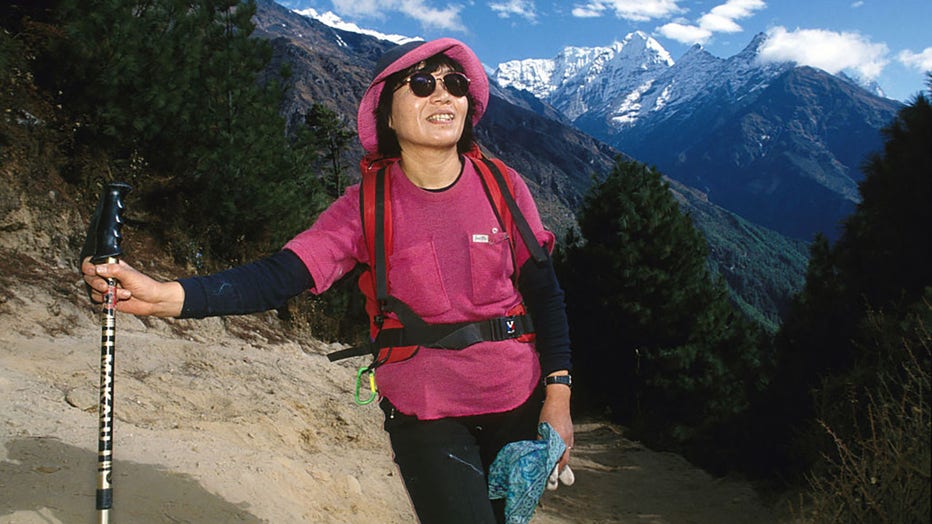
FILE - Junko Tabei, from Japan, was the first woman to reach the summit of Everest on May 16, 1975, at the age of 35. (Photo by John van Hasselt/Corbis via Getty Images)
Japanese climber Junko Tabei became the first woman to summit Mount Everest on May 16, 1975, the leader of an all-female Japanese climbing party.
In 1992, she became the first woman to complete the "Seven Summits," reaching the highest peaks of the seven continents.
Later in life, she became concerned about the degradation of Everest, completing master’s studies in 2000 at Kyushu University in southern Japan on the garbage problem as the famous mountain was opened to more climbers.
"Everest has become too crowded. It needs a rest now," she said at a 2003 parade in Nepal to mark the 50th anniversary of the first successful ascent of the peak by Hillary.
Who has climbed Mount Everest the most?
Kami Rita, one of the greatest climbing guides on Mount Everest, scaled the world’s highest peak for the 29th time on May 12, 2024, extending his own record for most times to the summit.
Rita and fellow Sherpa guide Pasang Dawa have been competing with each other for the title of most climbs of Mount Everest. Pasang Dawa has 27 successful ascents of the mountain, according to the Associated Press.

Mt. Everest climbers not deterred by COVID-19
The COVID-19 pandemic did not deter hundreds of climbers from trying to reach the summit of Mt. Everest, though the mountain was closed to climbers for a certain period of time in 2020.
Who is the youngest person to climb Mount Everest?
Jordan Romero, a 13-year old American from Big Bear, California, became the youngest climber to scale Mount Everest in 2010.
The next year, Romero broke the record for youngest climber to complete the seven summits.
Mount Everest deaths per year
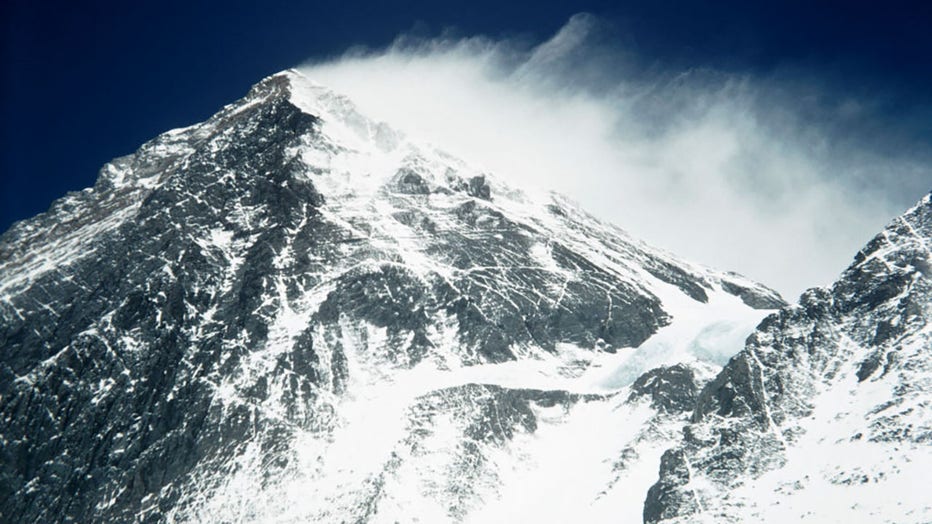
The South Summit of Mount Everest from Camp VII, Nepal, March 1953. (Photo by George Lowe/Royal Geographical Society via Getty Images)
As the allure of Mount Everest has grown, so have the crowds – with inexperienced climbers faltering on the narrow passageway to the peak and resulting in some deaths.
Because of the altitude, climbers have just hours to reach the top before they are at risk of pulmonary edema, when the lungs fill with liquid. From Camp Four at 8,000 meters (26,240 feet) to the 8,850-meter (29,035-foot) peak, the final push on Everest is known as the "death zone."
The conditions are so intense at such times that when a person dies, no one can afford to expend energy on carrying the body down the mountain.
At least 322 people have died on Mount Everest since the earliest recorded death in 1921, according to the Himalayan Database, a large, published record of mountaineering in the Nepalese Himalayas.
That averages out to about 3.1 deaths per year since then. However, it’s worth noting that most people didn’t attempt to climb Mount Everest until commercial trips started being offered in the 1990s.
Mount Everest gets commercialized
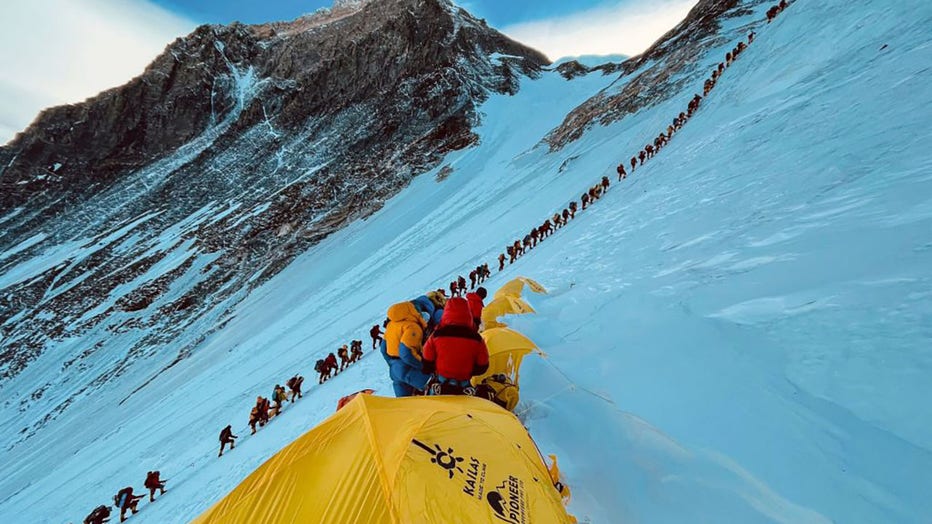
This photograph taken on May 31, 2021, shows mountaineers lined up as they climb a slope during their ascend to summit Mount Everest (8,848.86-metre), in Nepal. (Photo by LAKPA SHERPA/AFP via Getty Images)
Mount Everest is located on the border between Nepal and Tibet. For decades, their governments denied access to most foreign climbers. In 1985, access was opened to one Everest permit per season per route, according to the Washington Post.
But by the 1990s, many began realizing the opportunity for revenue, with countries opening up the permitting process and guides setting up more expedition companies, the outlet noted.
As services at base camp improved and trips were being offered at a lower cost, larger and larger crowds began arriving to the mountain.
Since 1953, a total of 2,272 expeditions with 16,487 members have attempted Everest, according to Himalayan Database records.
Crowded, deteriorating conditions on Mount Everest
The popular Himalayan climbing season begins in March and ends in May after which monsoon winds and melting temperatures make the mountains too hazardous for climbing.
Since the first conquest, the peak has been climbed thousands of times, and it gets more crowded every year. During the spring climbing season in 2023, 667 climbers scaled the peak, but that brought in thousands of support staff to the base camp.
There have been concerns about the number of people living on the mountain for months on end, generating trash and waste, but authorities have no plans to cut down on the number of permits they issue to climbers.
There are rules that require climbers to bring down their own trash, equipment and everything they carry to the mountain or risk losing their deposit, but monitoring has not been very effective.
"It is very dirty now. People throw tins and wrappings after eating food. Who is going to pick them up now?" Kanchha Sherpa told the Associated Press in March. He is the only surviving member of the mountaineering expedition that first conquered Mount Everest in 1953.
"Some climbers just dump their trash in the crevasse, which would be hidden at that time but eventually it will flow down to base camp as the snow melts and carries them downward," Kanchha Sherpa added.
For the Sherpas, Everest is "Qomolangma" or goddess mother of the world, and is revered by their community. They generally perform religious rituals before climbing the peak.
"They should not be dirtying the mountain. It is our biggest god and they should not be dirtying the gods," he said "Qomolangma is the biggest god for the Sherpas but people smoke and eat meat and throw them on the mountain."
Meanwhile, warmer conditions mean climbers who made their way across snow and ice are now crossing bare rock. Recent research found that Mount Everest’s glaciers have lost 2,000 years of ice in just the past 30 years.
The Associated Press contributed to this report. It was reported from Cincinnati.

